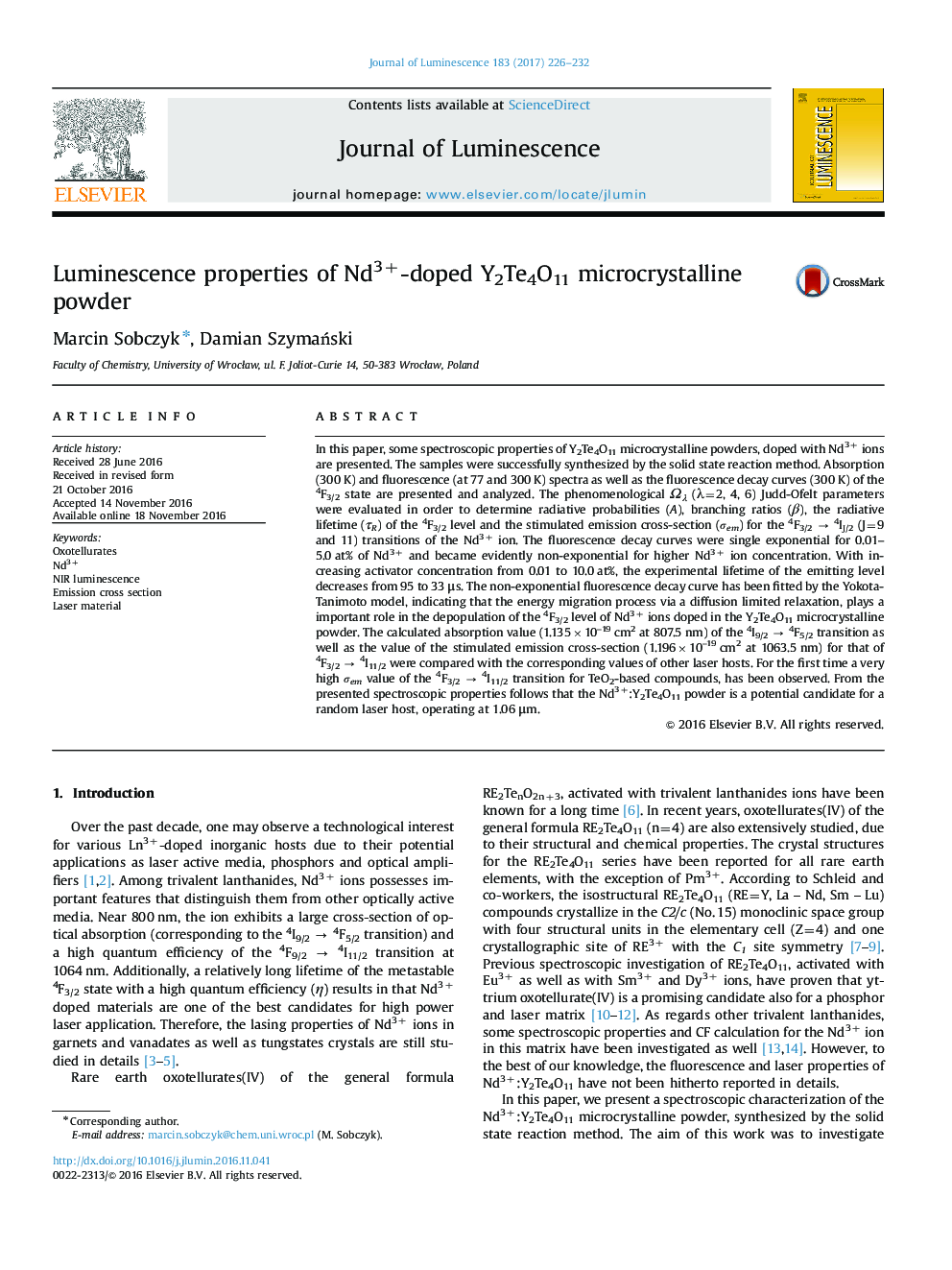| Article ID | Journal | Published Year | Pages | File Type |
|---|---|---|---|---|
| 5397677 | Journal of Luminescence | 2017 | 7 Pages |
Abstract
In this paper, some spectroscopic properties of Y2Te4O11 microcrystalline powders, doped with Nd3+ ions are presented. The samples were successfully synthesized by the solid state reaction method. Absorption (300 K) and fluorescence (at 77 and 300 K) spectra as well as the fluorescence decay curves (300 K) of the 4F3/2 state are presented and analyzed. The phenomenological Ωλ (λ=2, 4, 6) Judd-Ofelt parameters were evaluated in order to determine radiative probabilities (A), branching ratios (β), the radiative lifetime (ÏR) of the 4F3/2 level and the stimulated emission cross-section (Ïem) for the 4F3/2 â 4IJ/2 (J=9 and 11) transitions of the Nd3+ ion. The fluorescence decay curves were single exponential for 0.01-5.0 at% of Nd3+ and became evidently non-exponential for higher Nd3+ ion concentration. With increasing activator concentration from 0.01 to 10.0 at%, the experimental lifetime of the emitting level decreases from 95 to 33 μs. The non-exponential fluorescence decay curve has been fitted by the Yokota-Tanimoto model, indicating that the energy migration process via a diffusion limited relaxation, plays a important role in the depopulation of the 4F3/2 level of Nd3+ ions doped in the Y2Te4O11 microcrystalline powder. The calculated absorption value (1.135Ã10-19 cm2 at 807.5 nm) of the 4I9/2 â 4F5/2 transition as well as the value of the stimulated emission cross-section (1.196Ã10-19 cm2 at 1063.5 nm) for that of 4F3/2 â 4I11/2 were compared with the corresponding values of other laser hosts. For the first time a very high Ïem value of the 4F3/2 â 4I11/2 transition for TeO2-based compounds, has been observed. From the presented spectroscopic properties follows that the Nd3+:Y2Te4O11 powder is a potential candidate for a random laser host, operating at 1.06 μm.
Related Topics
Physical Sciences and Engineering
Chemistry
Physical and Theoretical Chemistry
Authors
Marcin Sobczyk, Damian SzymaÅski,
